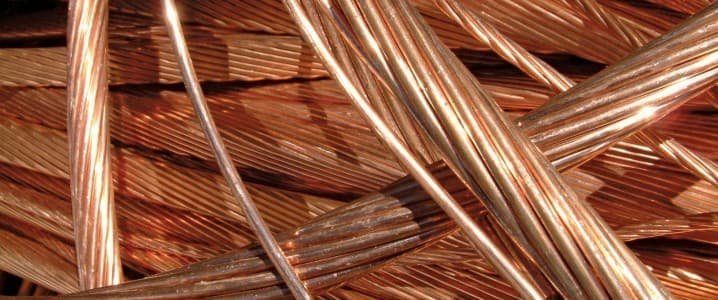Last month, President Trump took the trade world by surprise yet again by announcing a 50% tariff on imports of copper. The imports covered by the tariff were worth $15 billion last year, per Bloomberg. There are exemptions, but not many. The point of the tariffs is to bring copper processing back home. The problem: it may be a bit too late for that.
The U.S. president has made no secret of how he feels about the massive outsourcing of manufacturing to Asia, and more specifically, China. Trump recently urged Apple’s chief executive, Tim Cook, to move the company’s manufacturing operations out of China and back to the United States. He has also warned the tech major that “I don’t want you building in India.”
What the president is trying to do is revive manufacturing in the U.S. after decades of offshoring prompted by companies’ efforts to reduce costs by taking advantage of the cheap labor available in Asia. Yet that massive offshoring contributed significantly to China’s rise as the biggest supplier and processor of critical materials, including metals—and specifically copper. Over half of the world’s copper processing capacity is located in China. In the U.S., there are just two copper smelters, and the price tag of building new ones would be “extraordinarily high compared to the average”.
Related: Wall Street Oil & Gas Lending Down 25% YTD
The quote above is from the chief executive of Anglo American, Duncan Wanblad, who told the Financial Times that “When this all washes out, all we’ve done is embed a much more inflationary environment at a global level.”
The chief executive of Freeport McMoRan also said Trump’s vision of a return home for copper processing would be “very challenging”, because it was “not a given that you can bring on refined copper [capacity] very quickly”. On the contrary, Kathleen Quirk said, copper smelters were long-term investments, and substantial ones, at that. Bloomberg reported recently that Freeport’s Arizona copper smelter, one of the very few still operating in the U.S., has three times higher costs than smelters outside the U.S.
So, the reason for this reluctance among miners to get building smelters is simple, really. The United States is a high-cost country, which is what originally drove so many businesses to outsource some of their operations, notably in manufacturing, to China. Bringing the costs down far enough to motivate the construction of new smelters will take a lot of financial help that may not really be justified.
In recognition of this challenge, Trump exempted copper cathode, ore, and concentrate imports from the new levies. This immediately hit copper prices in New York after traders rushed to stock up on the metals ahead of the tariffs’ entry into effect. Now, forecasters predict a glut of copper in the U.S. because of that rush that turned out to be premature.
But that glut would not last long if the tariffs do. Demand for copper has been weakening in the United States for years, but it is now roaring back thanks to Big Tech, and supply will have to catch up. That this would be financially challenging is really unfortunate—because there is a lot of untapped copper in the U.S. that could be mined and processed locally, which is probably one of President Trump’s dreams.
According to USGS data, the U.S. has copper resources of some 47 million tons, ranking it seventh in the world, ahead of China, and theoretically able to add around 1.5 million tons to annual copper production, Bloomberg reported in June, citing GEM Mining Consulting. But it takes time, a lot of it. The average period between discovering a new copper deposit and the start of mining operations is almost 30 years, making it the second-longest in the world, after Zambia, per Bloomberg.
This explains the tariff exemption for some forms of copper and shows the extent of the challenges in trying to reshore critical industries to enhance national security. It also suggests that tariffs will not be enough to overcome these challenges. It will take subsidies.
“Unless the US significantly invests in downstream infrastructure, it will remain dependent on foreign refining, undermining the goal of restoring copper industry leadership,” a GEM mining consultant told Bloomberg. This investment will really need to be rather significant, because Chinese copper smelters are hurting sector players outside the country already.
There is so much smelting capacity in China that it has brought costs low enough to force some smelters in other parts of Asia to close, the FT reported this week. The big state-owned Chinese players “can withstand harsh market conditions for a very long period of time,” according to CRU’s chief of base metal supply, Erik Heimlich.
So, to revive the U.S. copper industry, the Trump administration would essentially have to do what the Biden administration did for wind, solar, and EVs: provide massive financial stimulus to motivate building new smelters and facilitate industry growth further with legislative changes that make it easier to build both mines and smelters.
By Irina Slav for Oilprice.com
More Top Reads From Oilprice.com

